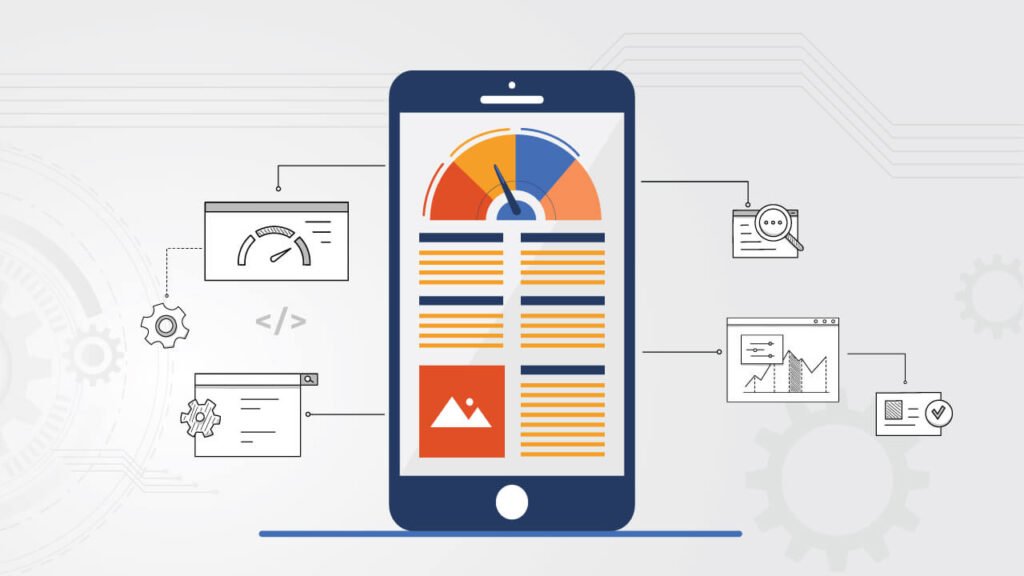
In today’s digital-first world, mobile applications have become an important part of every business method. Whether it is retail, healthcare, finance, or training, mobile apps serve as the number one touchpoint for consumer engagement and carrier delivery. However, with convenience comes obligation. Businesses need to not only make certain of seamless overall performance but also embed security and compliance into the middle of their app development process. This is wherein the principle of Secure by Design turns critical.
Building apps with compliance in mind is not optionally available—it’s a need driven by the aid of evolving risk landscapes, stringent regulatory standards, and user expectations around data privateness. From mobile application security services to cloud security tests, builders must not forget each layer of threat early in the design section to make certain resilient and compliant apps from day one.
Why Secure by using Design Is Non-Negotiable in Mobile App Development
The conventional method of “building first and securing later” leaves groups susceptible to attacks, compliance failure, and reputational harm. A Secure by Design attitude ensures that security is built into each level of the development lifecycle—no longer bolted on afterward.
Growing Risks Within the Mobile Ecosystem
Mobile apps are attractive goals of cybercriminals due to their broad applications and the sensitive information that they usually store. Dangers such as unprotected APIs, weak authentication, confusing data storage, and unknowing communication can easily endanger the safety of an app. This is why it is important to take advantage of the mobile application safety testing for the duration of development to identify the weaknesses before reaching production.
Embedding Mobile Application Security from the Start
Security should start at the planning stage. It starts off with an intensive danger modeling process to pick out potential attack vectors. This step allows for choosing secure frameworks, designing robust authentication protocols, and making sure data encryption requirements are in place. By enticing expert mobile application security services, corporations can proactively mitigate dangers without slowing down development.
Implementation of Secure Coding Practices
A strong mobile application rests on secure code. Developers must observe exceptional industry practices consisting of input validation, stable API handling, proper session management, and least privilege principles. Regular code opinions and static code evaluation ensure that vulnerabilities are identified and resolved in real-time.
Mobile Application Security Testing Throughout the SDLC
Testing isn’t always a one-time occasion. Mobile application security testing must be incorporated into the development lifecycle, from development to staging to production. Dynamic and static application security testing (DAST/SAST) has to be part of CI/CD pipelines to identify problems early. In addition, penetration testing presents real-world insights into how stable your app truly is under assault conditions.
Building Compliance into Mobile Apps
Compliance mandates like GDPR require agencies to put into effect data security via design and default. This way, minimizing data series, ensuring lawful processing, and allowing users to control their information. Role-based access control, stable data transmission, and anonymization strategies ought to be deliberate from the beginning.
Encryption and Secure Storage
All sensitive data, whether in transit or at rest, needs to be encrypted using enterprise-permitted requirements. Mobile applications need to additionally keep data secure using encrypted neighborhood storage or secure elements provided via the device operating system.
The Role of Cloud Security and Network Testing
With mobile applications being more and more dependent on cloud-based backends and APIs, it is now equally important to secure the environment these applications are running in as it is to secure the application itself. Even a great mobile app is still susceptible to attack when the backend cloud infrastructure or communication channels are attacked. This is why companies need to think of security as a whole: the application and the underlying systems should be assessed.
Carrying out Cloud Security Assessments
Mobile apps often need to store, process, and retrieve sensitive data hosted in cloud services, which is why cloud security testing is crucial. These tests detect misconfigurations, weak access controls, and insecure interfaces within the cloud. These risks can be mitigated by taking care of them beforehand so that organizations can make sure that the backend environment is consistent with the same security policies and compliance standards that are embedded in the mobile application.
End-to-End Testing Network Security
A network security test is used to guarantee that communication between the app and its backend servers is not vulnerable to attacks like man-in-the-middle (MITM) attacks, data interception, and unauthorized API access. This involves the implementation of secure communication standards such as HTTPS and TLS, certificate verification of the server, and verifying that APIs do not accept unauthorized requests. By securing the network layer, the business maintains additional defense in the overall security of its mobile application.
Collaboration With Security Experts To Give A Steady Approach
Designing safe and obedient mobile packages requires special information that spreads application development, cyber security and regulatory compliance. Partnering with a skilled security associate guarantees you get access to:
- Expert-led mobile application security services
- Real-time mobile application security testing
- Comprehensive cloud security tests
- Advanced community security testing
- Compliance consulting and ongoing support
A proactive associate no longer simply identifies vulnerabilities but also facilitates combining a scalable and sustainable security framework into your mobile development system.
Conclusion: Building With Confidence, Secure By Design
Ground up lets organizations create mobile apps, including protection and compliance, that are not only functional but also flexible, reliable, and future-proof. In your development cycle, mobile applications in the life cycle, by entering security services, strict testing, and cloud and social checks, reduce the risk of violations, ensure compliance with regulations, and promote consumer ideas.
Securify AI empowers groups to innovate confidently by providing tailored, proactive security and compliance solutions. With a long history of expertise and a customer-centric technique, we help you design and install mobile applications that meet the very best requirements—secure via design, compliant through default.

